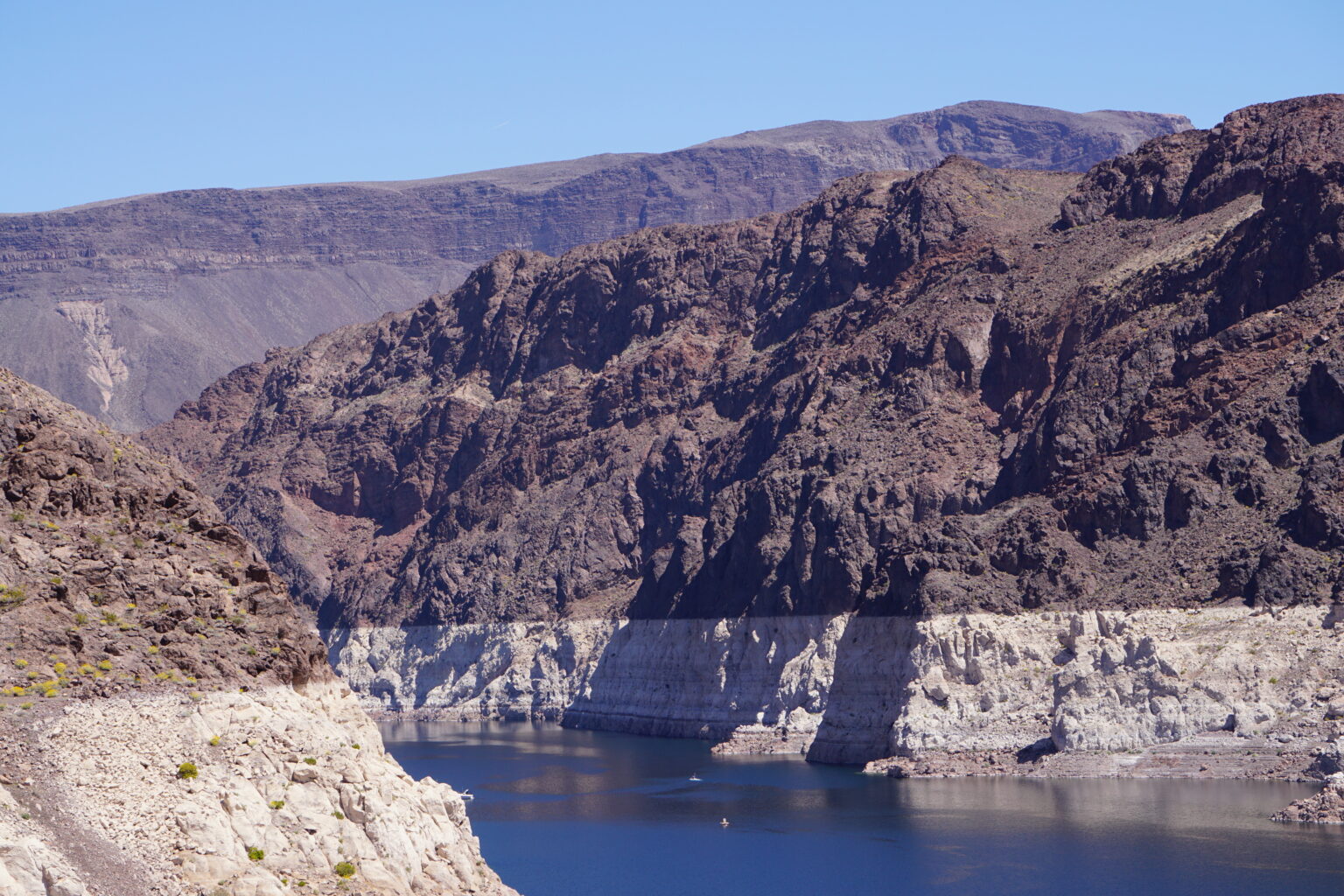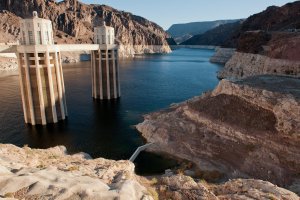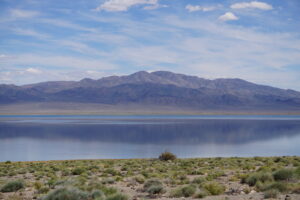After months of tense discussion over the future of the Colorado River, western states that depend on the river’s water submitted two competing plans for how it should be managed in the long-term on Wednesday.
Current guidelines for managing the river expire at the end of 2026. The U.S. Bureau of Reclamation will now consider the states’ proposals before finalizing a long-term management plan ahead of the 2026 deadline.
Water negotiators from lower and upper states along the Colorado River provided the federal government with separate proposals on Wednesday, after states could not agree on how to share the river’s dwindling water supply.
Under the proposal released by Nevada, Arizona, and California, the three states would conserve 1.5 million acre-feet of Colorado River water each year to address structural deficits in the Lower Basin states and future acidification caused by climate change.
Lower Basin states asked the federal government to determine water cuts based on the volume of water in all Colorado River reservoirs, rather than on water elevations in Lake Mead and Lake Powell, like it currently does.
The plan would also establish a 50-50 split between the lower and upper basin states if reductions beyond the initial 1.5 million acre-feet of water are needed.
“While addressing the structural deficit in the Lower Basin is a critical step in stabilizing the Colorado River, developing durable, long-lasting solutions requires all water uses to manage demands and commit to water conservation,” said Southern Nevada Water Authority General Manager John Entsminger, Nevada’s representative on the Colorado River. “Providing a framework that would better align future water demands with available supplies, the Lower Basin (plan) provides greater protection for the river and more certainty for its users.”
A competing proposal from the Upper Basin states of Wyoming, Colorado, New Mexico and Utah on Wednesday suggested the federal government determine water cuts based on the water levels in Lake Mead and Lake Powell, instead of all Colorado River reservoirs, as suggested by Nevada, Arizona, and California. As part of their proposal, Upper Basin states also asked the federal government to determine their reductions using actual water conditions in October, rather than predictions in August as it does now.
Water negotiators for Nevada, Arizona, and California described their proposal as a “more holistic approach to Colorado River management” that could provide more certainty to Lower Basin states’ water users.
“The Lower Basin Alternative creates resiliency and proposes climate change is a shared responsibility of all those that depend on the Colorado River,” said Colorado River Commissioner for California JB Hamby in a statement. “We need new ways of thinking to solve problems that have been unresolved for nearly a century and solutions for future challenges like climate change and extended drought… Each basin, state, and sector must contribute to solving the challenges ahead. No one who benefits from the river can opt out of saving it.”
Last year, Reclamation initiated an environmental review process to develop new rules for post-2026 operations. Since then, water managers across the Colorado River Basin – including federal, state, and tribal managers – have been attempting to negotiate a consensus-based proposal.
All seven Colorado River basin states did manage to agree on a short-term proposal that’s expected to conserve at least 3 million acre-ft of water through the end of 2026, while a new long-term plan is developed by Recelemation.
The short-term conservation plan — supported by all seven Colorado River basin states — was selected by Reclamation as their “preferred alternative” in a final environmental impact study released Tuesday.
Proposed short-term guidelines will allow the federal government to reduce water releases from Lake Powell down to 6 million acre-ft if lake’s surface elevation is predicted to drop below 3,500 ft over 12 months.
Elevations remain historically low
Reclamation Commissioner Camille Calimlim Touton said the short-term agreement will allow officials to prevent the reservoir from falling to critically low levels, while the federal government focuses on building a consensus-based, long-term agreement with all affected states.
“Everyone across the basin has remained united in our shared understanding that we could not, and will not, solve this crisis unless we do so together,” Touton said in a press call Tuesday.
Modeling by the U.S. Bureau of Reclamation, which manages the drought-stricken reservoirs, found that the risk of Lake Powell and Lake Mead reaching critically low levels has been substantially reduced, Touton said. Conservation investments and improved hydrology over the last year has reduced the chance of reservoirs falling below critical elevations to 8% at Lake Powell and 4% at Lake Mead through 2026.
As of March, Lake Mead’s surface elevation has reached 1,075 ft, its highest level since May 2021, according to the bureau. Lake Mead is 29 ft higher than it was a year ago, and upstream Lake Powell is 41 ft higher.
However, elevations in these reservoirs remain historically low. Lake Powell is still only 34% full, while Lake Mead is 37% full.
“The past two decades have culminated in critically low reservoir conditions in the Colorado River Basin and across the West, putting a strain on people and businesses, and wildlife and their habitats. The prolonged drought crisis is driven by the effects of climate change, including extreme heat and low precipitation,” Touten said.
Funds from the Inflation Reduction Act will be used to invest up to $670.2 in water conservation efforts, which will support more than half of the total 3 million acre-feet of water conservation stipulated under the short-term proposal. On Tuesday, reclamation officials also announced an investment of $160 million for three new system conservation implementation agreements in California, which will conserve nearly 400,000 acre-feet of water in Lake Mead through 2026.
The agreements include a partnership between Palo Verde Irrigation District and Metropolitan Water District to conserve up to 351,063 acre-feet of water, a joint deal between Bard Water District and Metropolitan Water District to up 18,090 acre-feet of water, and an agreement by the Coachella Valley Water District to conserve up to 30,000 acre-feet of conserved water through 2026.
However, Upper Basin and Lower Basin states have historically been at odds about how to share Colorado River water, and have struggled to come to agreements during the past few years. Those disagreements have led to a stall in negotiating new guidelines to replace the 2007 Colorado River management rules.
The Department of the Interior’s acting deputy secretary, Laura Daniel-Davis, alluded to those pending issues on Tuesday.
“We are committed to pursuing a collaborative consensus based approach to ensure that any action from the department is done with as much consensus as possible,” said the Department of the Interior’s acting deputy secretary, Laura Daniel-Davis, on Tuesday. “I want to be clear, we are not expecting every single issue to be smoothed out between the upper and lower basin. But the reality is that everyone is saying the same thing. We are all committed to a basin-wide solution.”
This story has been updated since its original publication.
Our stories may be republished online or in print under Creative Commons license CC BY-NC-ND 4.0. We ask that you edit only for style or to shorten, provide proper attribution and link to our website. AP and Getty images may not be republished. Please see our republishing guidelines for use of any other photos and graphics.




